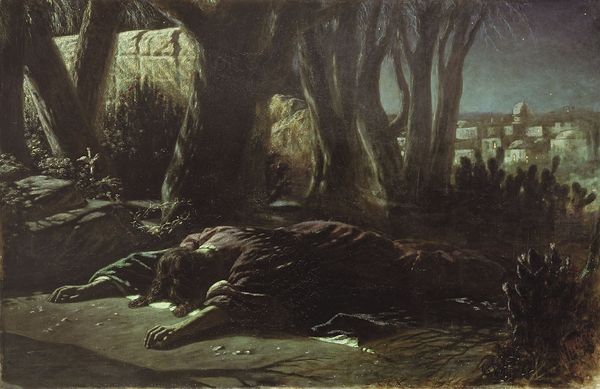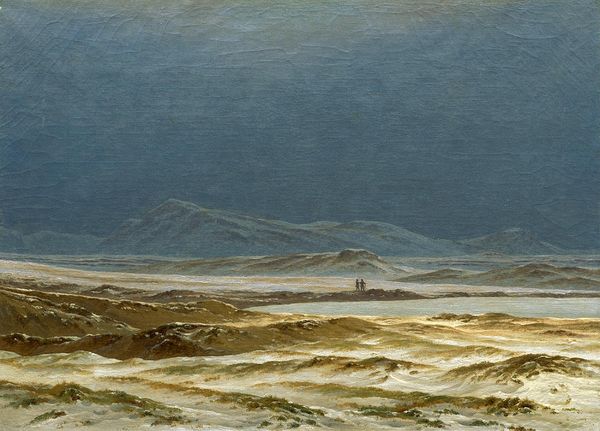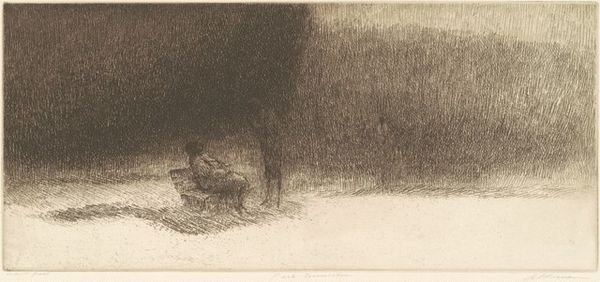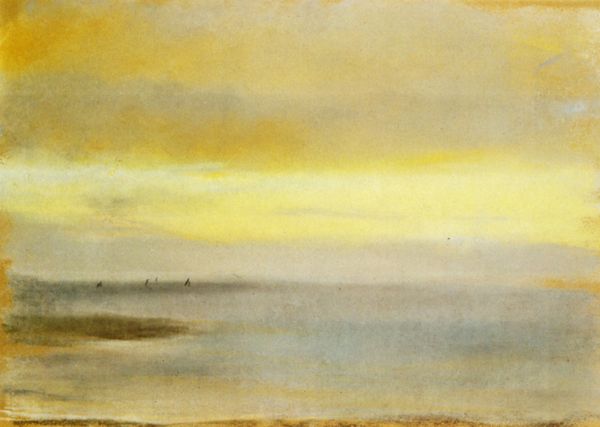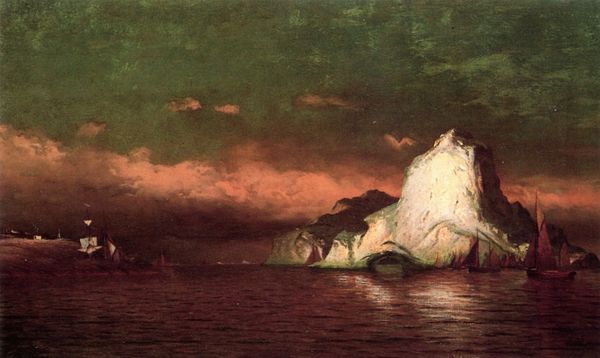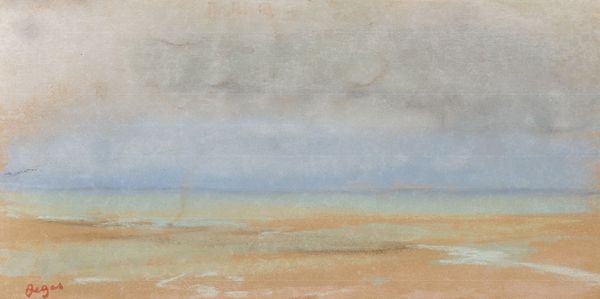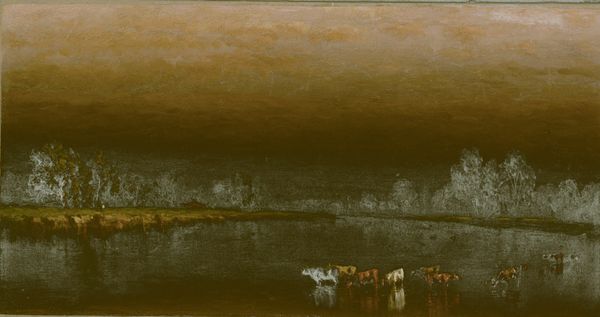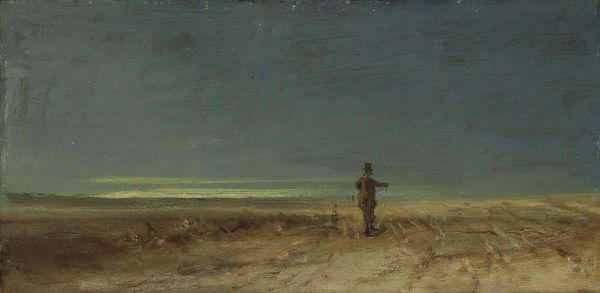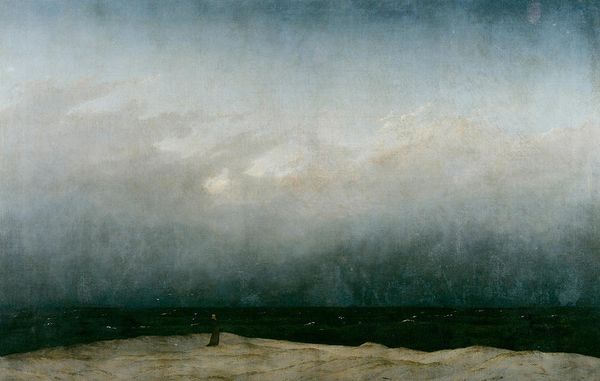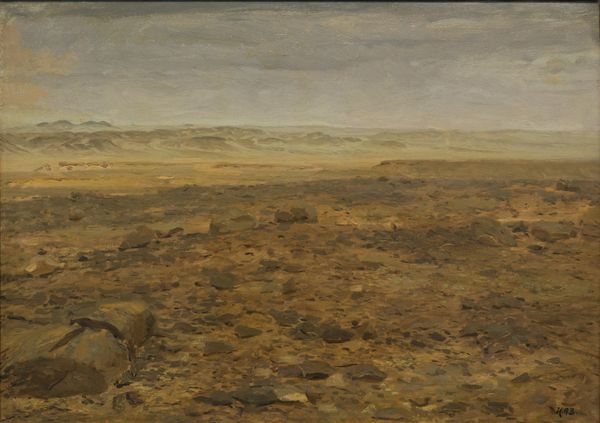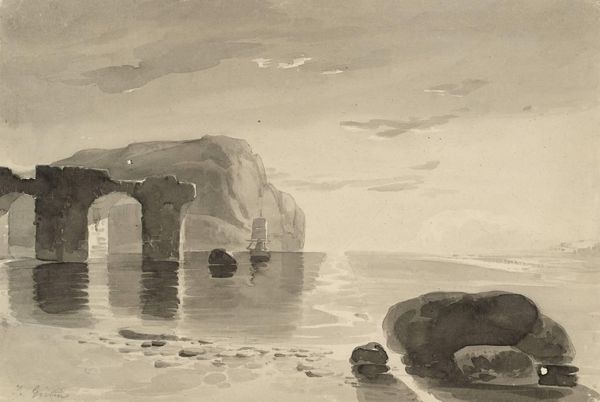
Copyright: Public domain
Editor: Luc-Olivier Merson’s oil painting, "Rest on the Flight into Egypt," painted in 1880, presents such a haunting image. The stillness of the night and the sheer scale of the Sphinx compared to the Holy Family... It evokes feelings of vulnerability and refuge simultaneously. What sociopolitical readings can we apply to it? Curator: Indeed, it’s a potent image. Beyond the immediate biblical narrative, let’s consider this "rest" through the lens of colonial power dynamics. The Sphinx, a symbol of ancient Egypt, looms large, dwarfing the figures of Mary, Joseph, and the infant Jesus. How might we interpret this in terms of cultural appropriation or the weight of history bearing down on a displaced family? Editor: That’s a powerful interpretation. I hadn’t considered the colonial context so directly. It makes me think about contemporary refugee crises and the often precarious welcome offered to displaced peoples. Curator: Precisely. And look at the figures themselves. Mary isn't presented in the traditionally idealized, Westernized manner. She seems almost… anonymous, a woman seeking safety in a land with a complex and layered history. Do you see a commentary on the universal experience of seeking asylum reflected here? Editor: Yes, I do. Especially the way Merson positions them – not as conquerors or figures of dominance, but as vulnerable subjects seeking shelter beneath the gaze of this ancient monument. So this isn’t just a religious scene, but a powerful statement about migration, power, and vulnerability? Curator: Absolutely. Art constantly invites us to reflect upon ourselves and history. Through this painting, Merson prompts us to confront the complexities of power dynamics, cultural identity, and the shared human experience of seeking refuge, all while subtly commenting on the intersection of the religious and the sociopolitical. Editor: I’ll never look at this piece the same way again. I now see the intersectional commentary that gives voice to universal themes of migration and social injustice, layered beneath the sacred narrative. Curator: Excellent! It shows how important it is to engage art through multiple frameworks, opening our awareness to both its history and contemporary realities.
Comments
No comments
Be the first to comment and join the conversation on the ultimate creative platform.
